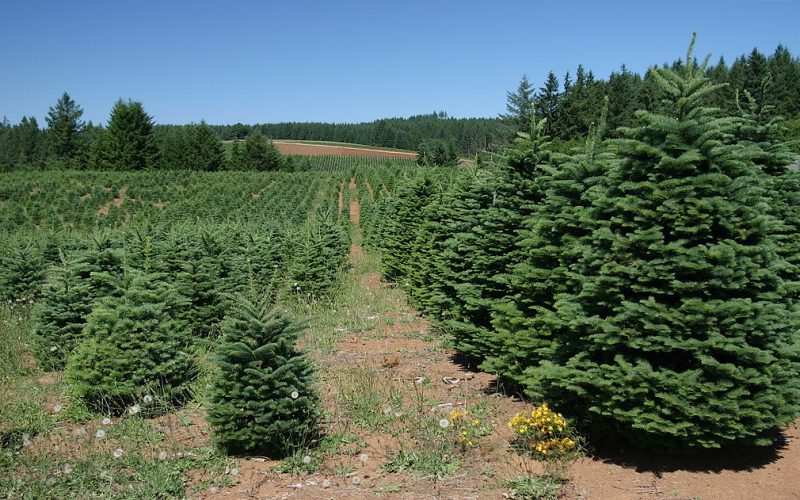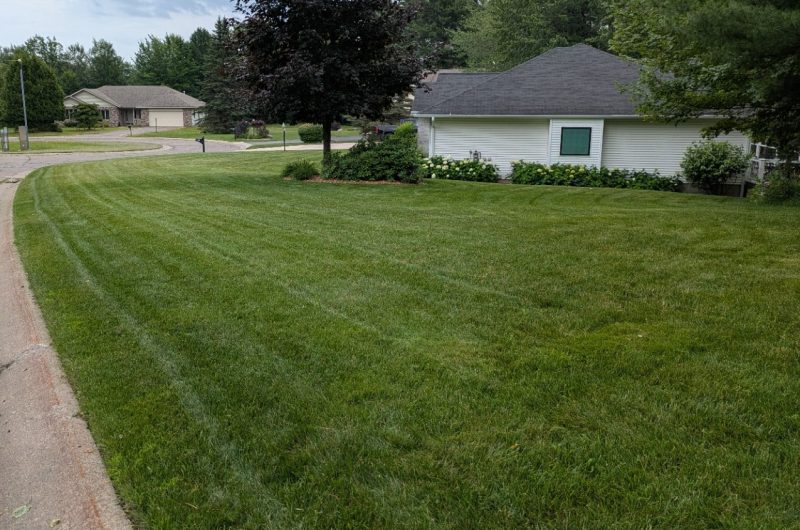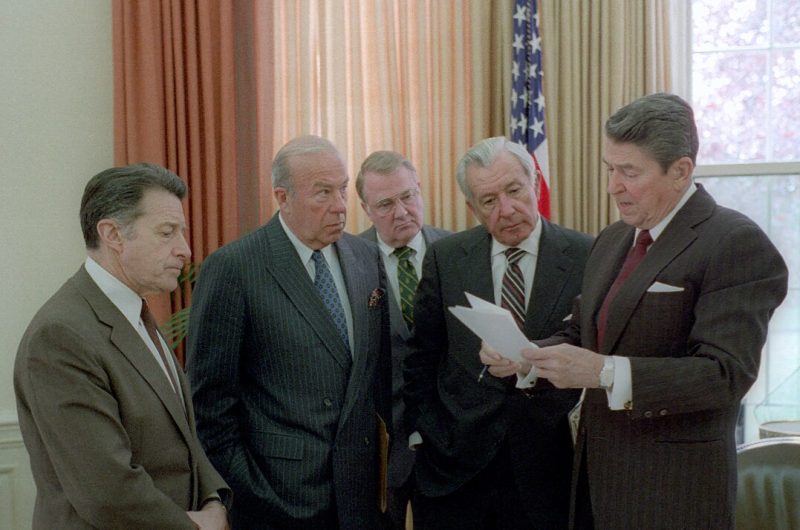Growing Christmas Trees in the Upper Peninsula

This article was prompted by a report that flooding from Hurricane Helene had destroyed hundreds of thousands of young Christmas trees in North Carolina. It turns out the state is the nation’s second largest Christmas tree producer, after Oregon. Michigan is third.
In 2022, its 1,236 tree farmers sold $45 million worth of Christmas trees, accounting for 12 percent of the approximately 14.5 million trees cut in the United States. The state’s climate and soils allow growers to produce a wider variety of trees than any other state.
The three most common species are Fraser fir, Scotch pine, and Colorado blue spruce. Christmas tree farms can be found in most of the state’s counties; Missaukee County, to the west of Houghton Lake, is the largest producer.
This article examines recent trends in Christmas tree production in the Upper Peninsula, beginning with a brief overview of the Christmas tree’s adoption in the United States and the factors involved in developing a successful tree farm operation.
Christmas Trees in the United States
Christmas trees were introduced to the United States by German immigrants and have been commercially sold since about 1850, when most were cut from forests. By the turn of the twentieth century the natural supply of evergreens had been decimated due to over-harvesting.
Numerous newspaper editorials in the early 1900s opposed cutting holiday trees due to the destructive methods used in harvesting and the perceived wastefulness of the practice. One editorial referred to the practice of decorating Christmas trees as ‘an absurd fad,’ while another called for the creation of an ‘artificial’ tree.
Despite opposition to the practice of cutting Christmas trees there was money to be made from growing them and in 1901 the nation’s first Christmas tree farm was started near Trenton, New Jersey.
Politicians and government entities have helped popularize the use of Christmas trees. According to the White House Historical Association, the first President to put a Christmas Tree in the White House was Benjamin Harrison in 1889.
The annual placement of the so-called National Christmas Tree on the Ellipse, south of the White House, started in 1923, while Michigan’s practice of placing the state’s official Christmas tree at the State Capitol dates back to 1987.
Large scale Christmas tree farming began in the 1950s. According to the 2022 Census of Agriculture there were over 16,000 Christmas tree farms in the United States covering over 292,050 acres; two decades earlier they covered nearly 447,000 acres.
In 2022, 14.5 million Christmas trees were cut, a drop of nearly 8 million trees from twenty years earlier. They are grown in all 50 U.S. states, with Oregon (33%), North Carolina (22%), Michigan (12%), Washington (6%), and Pennsylvania (5%) accounting for the bulk of the country’s production.
Christmas Tree Farming
At first glance, the Upper Peninsula’s extensive forestland might seem an ideal place to grow Christmas trees, but growing them commercially is challenging. Christmas trees take at least seven to ten years to grow before they are harvested, which means a long delay before the farmer receives any return on their investment.
At the same time, growing and selling Christmas trees is labor intensive. Much of the physical labor is completed during the warm summer months, since almost all trees require pruning to attain the proper branch and fascicle (twig/needle) density and conical Christmas tree shape.
Rain or snow during harvesting may mean difficult cutting conditions for the wholesale market. During the growing period farmers can expect to lose trees as they are vulnerable to a variety of threats including theft, drought, damage from insect infestations and diseases.
Beyond environmental threats, there is no guarantee there will be a market for the trees when they are ready to be harvested. In short, growing Christmas trees is a complex, high-risk business that requires a significant investment to get started with no guarantee of a return.
Christmas Tree Farming in the Upper Peninsula
Given the nature of the Christmas tree farming business, the limited market for trees in the Upper Peninsula due to the region’s declining population, and that shipping costs to markets outside the region would eat into any profit margin, it’s not surprising that Christmas tree production is in decline.
In 2002 there were 159 Christmas tree farms in the U.P.; by 2022 the comparable figure was 91 (Table 1). Menominee County experienced the biggest decline, with a drop of 42 farms, followed by Marquette County’s drop of 13.
During the same period, Christmas tree acreage declined from nearly 5,000 to 1,600 acres, a 67% decline, which is significantly higher than the state’s overall 45 percent decline. Menominee County experienced the biggest loss at over 2,200 acres.
In contrast, Delta and Iron counties, despite losing farms, experienced small gains in Christmas tree acreage.
The Future of Christmas Tree Farming
The decline in the U.P.’s Christmas tree farming is part of a national trend. Sales of fake trees have steadily increased since the early 2000s, and while they cost more than a natural tree, they typically last 7-10 years. The cumulative effect of fake tree purchases has been to encroach upon the market for real trees.
Nearly ninety percent of artificial trees sold in the U.S. are manufactured in China. Most are made with plastic and metal materials, which eventually end up in a landfill. In contrast, real Christmas trees provide many environmental benefits including absorbing carbon dioxide, stabilizing soil, and protecting water supplies.
Despite artificial trees’ negative environmental impacts, cost is a key factor influencing which type of tree consumers purchase. The price of real trees has steadily risen due increased production expenses and shortages brought about by extreme weather events, making the selection of artificial trees even more likely.
These circumstances mean that demand for Christmas trees will continue to drop and the U.P.’s Christmas tree production will decline, which serves as a reminder of the difficulty in insulating the region from global forces.







Another excellent article. All valid points. I stopped purchasing real trees years ago. Cost was one factor but the most important is the increased fire hazard that real trees create. That is why I stopped purchasing real trees.
I’m considering planting Fraser Firs for Christmas trees. Hopefully we will enjoy the whole process.
Interesting read here.
I loved the nostalgia that the previous generation established in our hearts.
And nothing beat the smell of a fresh tree versus the smell of (plastic)
And going out and cutting one down with entire family.
What’s that anymore?
That ll being said the new generations seem to have lost those connections and memories too bad.
And the Christmas Eve/Day church service Good Luck America.
Those days have long left the collective memory and been replaced by a general numbing of what was the soul of families core beliefs.
Do unto others as you. would have them do unto you
Nope I. would not trade those days and people for the future of another day in this America of today.